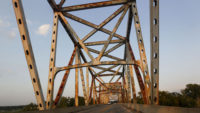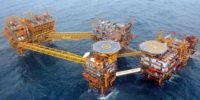Owner: United Therapeutics Corp.
Lead Design Firm, Structural Engineer & MEP Engineer: EwingCole
Construction Manager: The Whiting-Turner Contracting Co.
Project Management: Stranix Associates
Commissioning Authority: Cornerstone Commissioning
Green Building Consultant: Atelier Ten
Designing and building one of the largest net-zero-energy commercial towers in the U.S. on a dense downtown campus was an exercise in “detailed coordination and innovative thinking,” one Best of the Best Projects judge pointed out, but the building team’s push to achieve lofty energy performance and sustainabilty goals jibes with its biotechnology firm client’s “mission of saving lives,” according to the submission.
The 210,000-sq-ft oval Unisphere structure, which achieved a LEED Platinum rating, includes offices, clinical operations, a virtual drug development lab as well as 75,000 sq ft of structured parking, 10,000 sq ft of retail space and a 5,000-sq-ft atrium.
The project was finished two months late in 2018 due to the facility’s complexity and the amount of cast-in-place construction. “The geometry of the system was such that none of the 500-plus unitized curtain wall panels were the same shape,” says the project team. The contractor and a curtain wall consultant took multiple trips to Europe “to vet the manufacturing factory and monitor the plant’s quality-control procedures.”
The team claims better results on cost, describing the project as “significantly under budget,” although the submission did not disclose its final price tag, nor has the owner or team revealed the number in public statements.
Jared Loos, CEO of lead designer EwingCole, says the project will seek the newer LEED Zero certification when it completes a one-year performance verification period. “The team fully expects to meet the goal based on the 11 months of data collected so far,” he says.
To meet net-zero-related requirements, 15 building systems had to work in unison. System features include windows that automatically darken when outside temperatures rise and a concrete labyrinth 12 ft below the building that functions as a passive heating and cooling system.
Key to the building’s functionality are 52 geo-exchange wells drilled 500 ft into the earth that function like heat pumps. “Some of the integration strategies used on the project were so advanced that they could not be accurately modeled by current energy modeling platforms,” says Loos.
A therapy pool in the building atrium absorbs excess heat and has what the team says is a unique cover that can add to usable floor space, and can also be lowered to the pool bottom.
Sustainability Stewards
The building also makes it easy for occupants to become sustainability stewards. Large-scale graphic installations on each floor communicate sustainable strategies in easy-to-understand terms, says the team, while an interactive, touch-screen display on the fifth floor uses real-time energy data to provide more detail. “A series of ‘what-if’ scenarios enable occupants to better understand their decisions in the context of energy performance,” says the submission.
Unmissable in the main lobby is a 40-ft-dia wall-mounted LED light installation that “provides an instantaneous snapshot of the building’s energy performance,” the team says.
To boost quality assurance, project participants integrated the controls and software components of different systems in a lab mock-up months in advance of actual implementation to ensure correct engineering and constructibility decisions and that “vendor products chosen matched the intent of the MEP design,” the team says.
Owner United Therapeutics was an active participant in the process. When Maryland law barred the team from placing geothermal wells under the building footprint, executives successfully lobbied the state legislature for a modification—contending it would also help other building owners, the team says. But politics again intervened when tariff-generated volatility in the solar panel market caused three vendors to file for bankruptcy.
In assessing the Unisphere’s operating performance, Loos rates its geo-exchange heating and cooling plant and lighting system as “better than expected.”
But he says the building’s “largest underperformer” is the facade-mounted 3,000-panel photovoltaic energy system, which was 18% below its power generation goal. Loos attributes that to now-addressed start-up problems; he expects better second-year performance numbers, emphasizing that overall improved Unisphere functionality “kept the building on track for zero net energy performance with a 15% net renewable energy export.”








Post a comment to this article
Report Abusive Comment